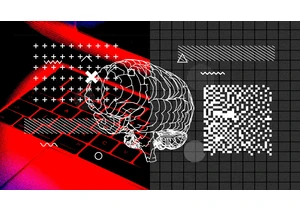Not only have I had the privilege of working in and covering Silicon Valley for the past 40 years, but I was also born here. I remember what it was like when it was called the “Valley of Heart’s Delight.” Back then, the entire valley was orchards of apricots, peaches, and cherries and fields of strawberries. In fact, at that time, the area’s primary business was fruit-packing canneries that processed these fruits and made jams and jellies. The summer mornings of my childhood were marked by the sweet aroma of jams and jellies prepped for canning.
But by the mid-1960s, urban crawl kicked in. Soon, orchards were dug up to make way for new businesses and housing. The last major cannery closed in 1967.
In a timely turn of events, around 1965, the semiconductor era was born in the valley. This region south of San Francisco became a center of our tech universe, led by Shockley Semiconductor labs, Fairchild Semiconductor International, Intel, and others.
While semiconductors became the heart of all tech innovation, a broad audience did not understand their real impact until the birth of the personal computer. Although the first one can be traced to Ed Roberts’ Altair 8800 in 1974, the PC got worldwide attention when Steve Jobs and Steve Wozniak’s Apple-1 was released in 1976.
The broader impact of the PC and the next reinvention of Silicon Valley stemmed from IBM’s decision to use Intel’s 8088/8086 processor in its first PC in 1981. When the machine became a surprise hit worldwide, this strategy put Silicon Valley on the map. The IBM PC created an entire industry of hardware, software, PC stores, and services, and the PC era was born.
Today, the PC is still an essential part of our tech world, but the demand for PCs peaked in the mid-2000s. At its highest, when demand reached 400 million units a year in 2023, Gartner reported that PC sales were 241 million worldwide.
In another twist of events, Silicon Valley began reinventing itself when Netscape introduced its web browser in 1994. By 1997, the internet boom was in full swing, and a new industry emerged from this area as the internet became the heart of all types of new applications, services, and products.
Those who thought they could easily create a web browser app with no money or business model behind them soon led to what we now call the dot-com bust of 2000-2001. It weeded out the wannabes with little to offer, but the heart of the internet revolution soon found its footing and changed the world of work, learning, gaming, and entertainment. It also brought forth social media and the streaming video we have today.
Silicon Valley reinvented itself yet as the center of the smartphone world when Apple introduced the iPhone in 2007. Semiconductor engineers, software programmers, and application developers began coming to the valley as part of one of its most significant growth opportunities. New companies such as Uber and Lyft created entire new sub-industries with the smartphone at their center. This time, product sales were measured in the billions, not millions: According to Statista, smartphone subscriptions worldwide in 2022 were 6.4 billion, prjected to grow to 7.7 billion by 2028.
All of these new technologies, from PCs to laptops to the internet and smartphones, helped reenergize Silicon Valley and bring it greater fortunes. But the transition from one major tech focus to another has always forced existing companies to change their direction. These shifts have often led to many people losing their jobs, especially when they’ve come during a down economy.
Now we’re in another one of those transition periods. Economic headwinds, overhiring during the pandemic, and major tech companies positioning themselves for the next big thing have caused a lot of layoffs and disruption. But three emerging technologies are already on the cusp of propelling Silicon Valley in the decades to come.
The first of these technologies is AI. That’s rather obvious, given the intense current interest in the subject. But so far, we’re only scratching the surface of how it will impact all aspects of our lives.
Over the next 10 to 15 years, the processors behind the AI revolution will become exponentially more powerful. Already, we’re seeing intense work on semiconductor designs and roadmaps focused on powering AI apps, solutions, and services that we can’t even imagine today. AI will be one of the most important technologies driving computing in the next 25 years. It will also drive Silicon Valley’s next phase of growth and importance.
The second technology that will spur new growth in Silicon Valley is spatial computing. For many years, 3D has been used in specialized vertical applications such as computer-assisted drafting. However, for most of us, our computing world is 2D. That’s okay, given how 2D-computing has dramatically impacted all aspects of our work and personal lives so far. But the move to 3D will be led by Apple and many others that are laying the groundwork for 3D movies, gaming, sports, entertainment, and concerts, and other new applications that haven’t been invented yet.
For three years, I’ve been working on mixed-reality projects with enterprise companies, some of which started exploring VR as early as 2016. With my input, ISMGuide.com created a dedicated Metaverse Resource Center website where we list close to 300 case studies of companies already using VR. Major firms, such as Walmart, Nike, Siemens, The Mayo Clinic, and Gucci, are using virtual technology for training, sales, and services today.
The third area to watch, quantum computing, is still in its extremely early days but will dramatically impact our digital world. The technology is expected to significantly change AI and machine learning, leading to benefits such as hyper-personalized shopping suggestions and advanced smart-home tools. It will also radically change healthcare when used for new and faster drug discoveries, potential cures, and finding new ways to extend the human lifespan.
Quantum computers should also benefit sectors such as investing, supply-chain management, entertainment, and robotics. However, they may also threaten privacy and cybersecurity if proper defenses are not in place by the time quantum machines really start getting deployed.
When you combine these three new technologies that will be powered by many Silicon Valley companies, you can see that this region is reinventing itself for its next act. It will take time, but I contend that we are on the verge of one of the valley’s strongest growth periods.
Login to add comment
Other posts in this group


I’ve worked at the bleeding edge of robotics innovation in the United States for almost my entire professional life. Never before have I seen another country advance so quickly.
In


Restaurant industry leaders are excited for

Elon Musk’s anger over the One Big Beautiful Bill Act was evident this week a

Welcome to AI Decoded, Fast Company’s weekly new

When artificial intelligence first gained traction in the early 2010s,
